Circle of Gerard Soest (c.1600–1681)
In this portrait, painted in the era of London’s Great Fire, a young woman has been depicted wearing the most luxurious attire and a fortune in jewellery. The scarlet silk drapery is held in place by two huge gold and pearl brooches. A huge diamond, pearl, and gold brooch is on the bodice, and perhaps most striking of all, is the heavy band of gold, ruby, and pearls prominently displayed over the fur. The huge pear-shaped earrings are called unions d’excellence reflecting the difficulty of finding perfectly matched pearls of such large size (they could range up to 20 millimetres in diameter). The costume and jewellery are of course indicative of this woman’s wealth and this portrait certainly conveys that message. The window, through which the viewer can see a blue sky and a landscape, ads interest to the portrait, and was often used in portraiture at the time.
The artist was immensely adept at the oil technique of painting. The face, hands, and the drapery have been rendered with remarkable delicacy; note the carefully placed highlights to the eyes and the bottom lip. The precise identity of the artist remains elusive however it is clear that they were exceptionally talented. Of the legions of Dutch emigree artists working in England at the time, only a small selection has ever been studied in depth and identified by art experts and historians, leaving the identity of the vast majority unknown to us today, despite some possessing skills on par with the most celebrated artists that we know. This portrait falls into that category… and is a remarkably fine example from the period.
The close-curled hair, springing loosely away from the head, was a fashion of the 1670s and was known as the hurluberlu (first appeared c.1671). This, and the attire, help to date the portrait to circa 1675-1688. In the celebrated letters of Madame de Sévigné when describing the style accounted “Now just imagine the hair parted peasant fashion to within two inches of the back roll; the hair each side is cut in layers and made into round loose curls which hang about an inch below the ear; it looks very young and pretty - two bouquets of hair on each side... a large curl on top which sometimes falls down the neck.” The placement of the delicately rendered hand is reminiscent of the work of Van Dyke.
Upon re-lining this canvas indistinct text (including “King Charles ?”) was uncovered on the reverse (see photo).
Known as Zoust by his contemporaries, Gerard or Gilbert Soest (circa 1600 – 11 February 1681) was a portrait painter who was active in England during the late 17th century. He is most famous for his portraits of William Shakespeare and Samuel Butler, but painted many members of the English gentry.
He was born in Soest, Westphalia, in the early part of the first decade of the seventeenth century, circa 1601/1602 (he was noted by Charles Beale as "neare 80 years old when he died"). Nothing certain is known of his training or of his work in Holland, but his later style suggests links with the Utrecht school.
Soest may have come to London as early as 1644 and was certainly there by 1650. His studio was first near Lincoln's Inn Fields, then in Southampton Buildings, north of the Strand. He was a painter of exceptional distinction and enjoyed good patronage after the Restoration. His work expressed the human, rather than purely social values, of his sitters, and it is these qualities that can be seen in our portrait. His work was chiefly on a head-and-shoulders scale but he also painted in three-quarter-length and full lengths, too. He died in London on 11 February 1681.
Measurements: Height 92cm, Width 78cm framed (Height 36.25”, Width 30.75” framed












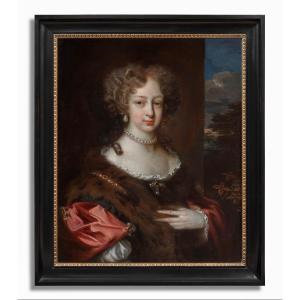












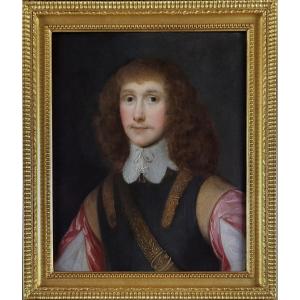
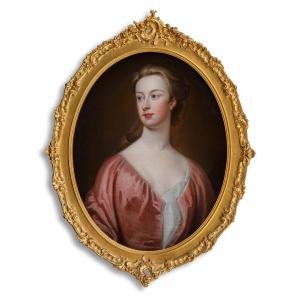
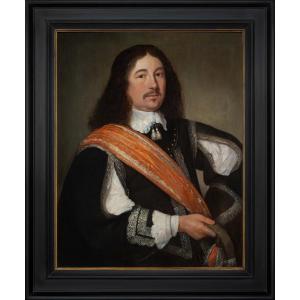


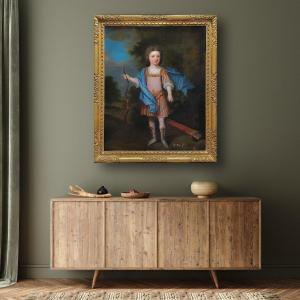





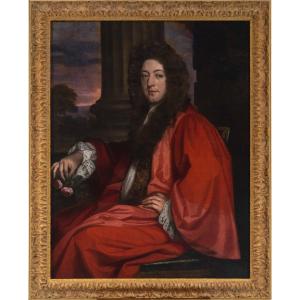
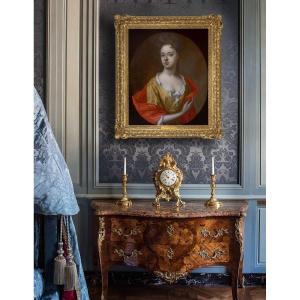

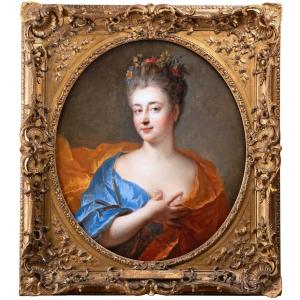






 Le Magazine de PROANTIC
Le Magazine de PROANTIC TRÉSORS Magazine
TRÉSORS Magazine Rivista Artiquariato
Rivista Artiquariato